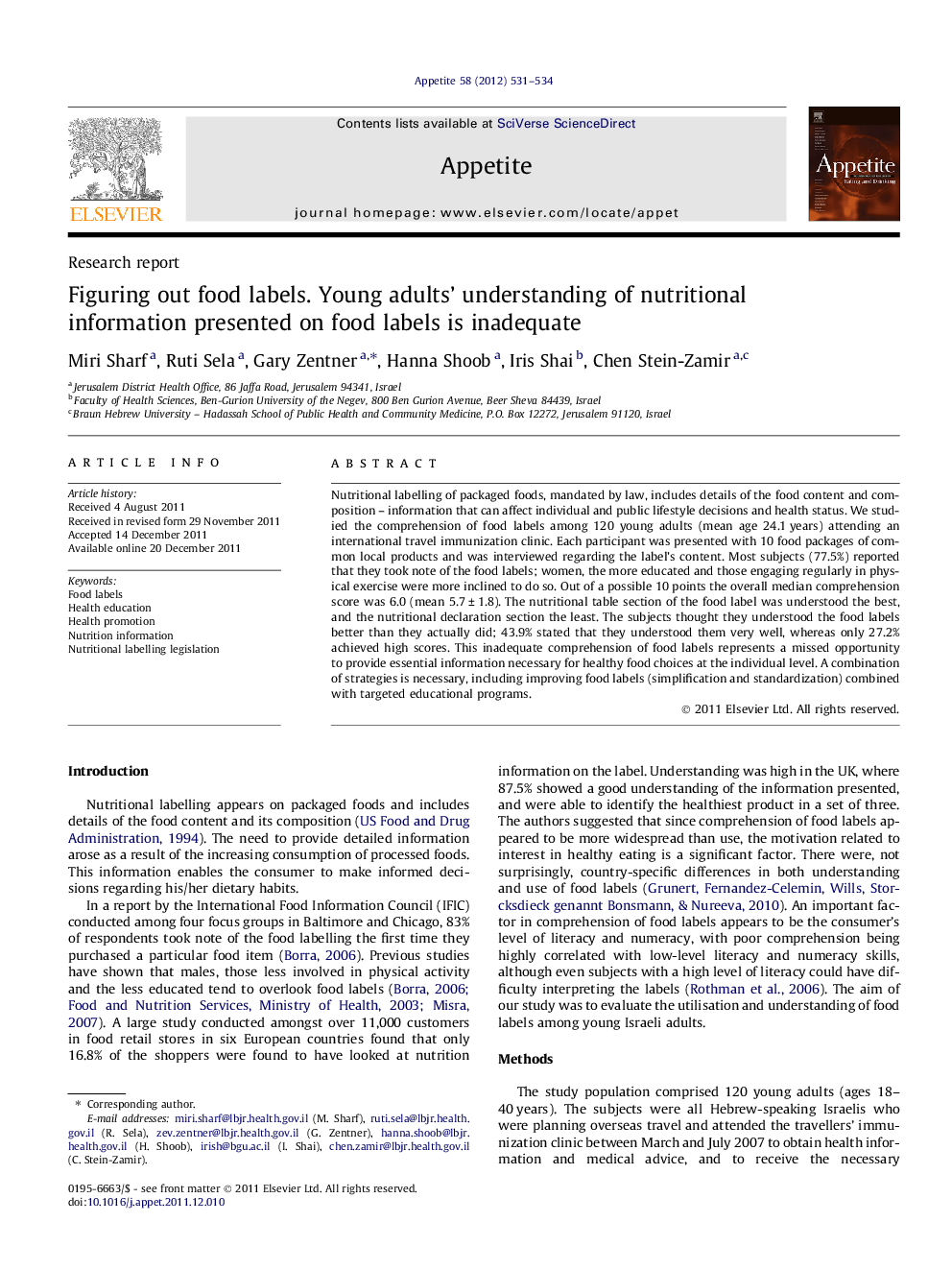| Article ID | Journal | Published Year | Pages | File Type |
|---|---|---|---|---|
| 940506 | Appetite | 2012 | 4 Pages |
Nutritional labelling of packaged foods, mandated by law, includes details of the food content and composition – information that can affect individual and public lifestyle decisions and health status. We studied the comprehension of food labels among 120 young adults (mean age 24.1 years) attending an international travel immunization clinic. Each participant was presented with 10 food packages of common local products and was interviewed regarding the label’s content. Most subjects (77.5%) reported that they took note of the food labels; women, the more educated and those engaging regularly in physical exercise were more inclined to do so. Out of a possible 10 points the overall median comprehension score was 6.0 (mean 5.7 ± 1.8). The nutritional table section of the food label was understood the best, and the nutritional declaration section the least. The subjects thought they understood the food labels better than they actually did; 43.9% stated that they understood them very well, whereas only 27.2% achieved high scores. This inadequate comprehension of food labels represents a missed opportunity to provide essential information necessary for healthy food choices at the individual level. A combination of strategies is necessary, including improving food labels (simplification and standardization) combined with targeted educational programs.
► Nutritional labels provide information affecting individual and community health. ► The study showed that food labels are not adequately understood by many consumers. ► Better understanding requires improved design and standardization of food labels. ► Public education regarding nutritional principles and knowledge is also important.
